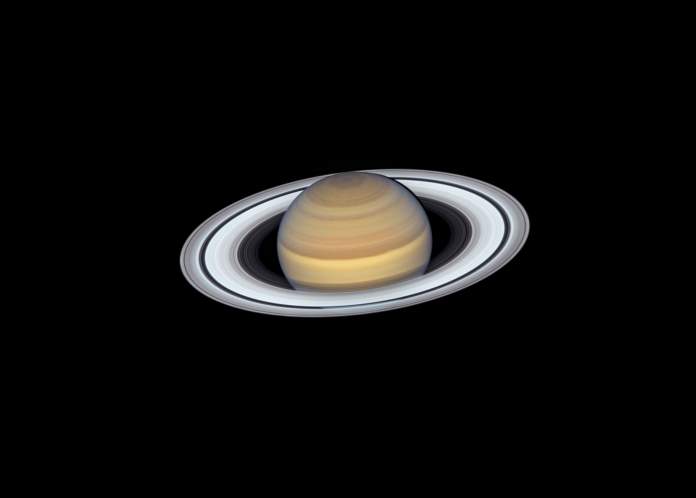NASA, ESA, A. Simon (GSFC), M.H. Wong (University of California, Berkeley) and the OPAL Team
NASA and the European Space Agency (ESA) shared the newest photo of Saturn taken by the Hubble Space Telescope — and the planet’s rings are on full display.
The photo is one of the clearest photos ever taken of Saturn, since the Hubble can snap high-resolution images of other planets in our solar system better than pretty much anything else except a spacecraft that visits the planet, NASA and the ESA said in an announcement sharing the photo released Thursday.
“Saturn’s signature rings are still as stunning as ever,” NASA wrote. “The image reveals that the ring system is tilted toward Earth, giving viewers a magnificent look at the bright, icy structure.”
While we’ve learned a lot about the gas giant’s rings in recent decades — including that they are composed of ice and dust in orbit around the planet — much about them is still a mystery. Astronomers still can’t agree on how old the rings are, and they also don’t know what caused them to form in the first place.
The new Hubble images show that Saturn has a “turbulent, dynamic atmosphere,” NASA wrote, including many violent storms that quickly subside. A major storm visible in an image shot by the Hubble last year has since disappeared in the new images.
“Smaller storms pop into view like popcorn kernels popping in a microwave oven before disappearing just as quickly,” NASA wrote. “Even the planet’s banded structure reveals subtle changes in color.”
One gaseous pattern on the planet has remained — a six-sided pattern on Saturn’s north pole, which astronomers have dubbed the “hexagon” is still there. That pattern, identified in 1981 by the Voyager 1 spacecraft, is caused by a high-speed jet stream.
NASA and the ESA also released a short video, taken in June, that shows several of Saturn’s icy moons orbiting the planet over 18 hours. The moons — Tethys, Janus, Mimas, Enceladus, and Rhea — each have different orbits. The closer a moon is to the planet, the faster it orbits.
[youtube https://www.youtube.com/watch?v=8eJM0WlEjTs]
The latest Saturn photos are a part of the Outer Planet Atmospheres Legacy Project (OPAL), a collaboration that’s meant to help scientists better understand the atmospheric dynamics of all the planets in our solar system. Moving forward, scientists will keep an eye on Saturn’s weather to see if they can identify any patterns.
The Hubble has been on a roll lately — on Wednesday, NASA said that it had been used to discover an Earth-like exoplanet known as K2-18b. The so-called “Super-Earth” is about 110 light-years away and has water vapor in the atmosphere — meaning it could support life. In August, the Hubble captured beautiful images of a “cosmic jellyfish” — the planetary nebula NGC 2022 in the constellation of Orion.

